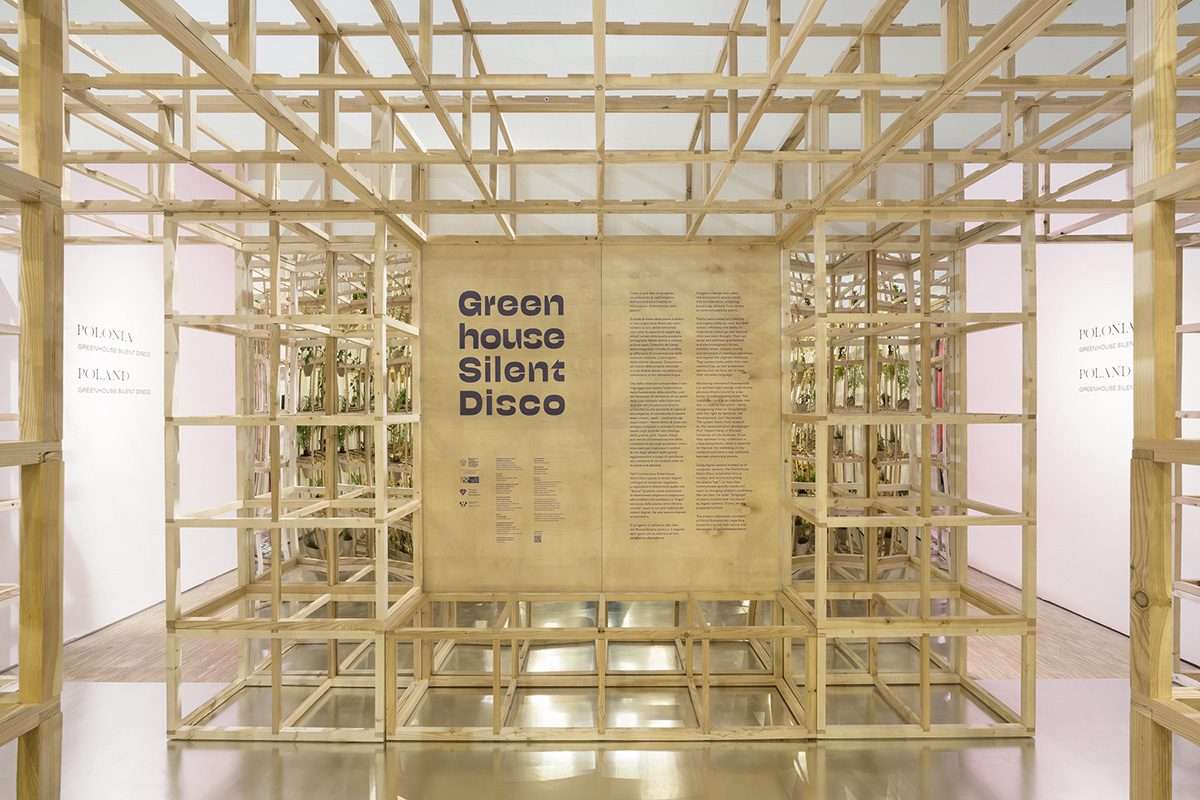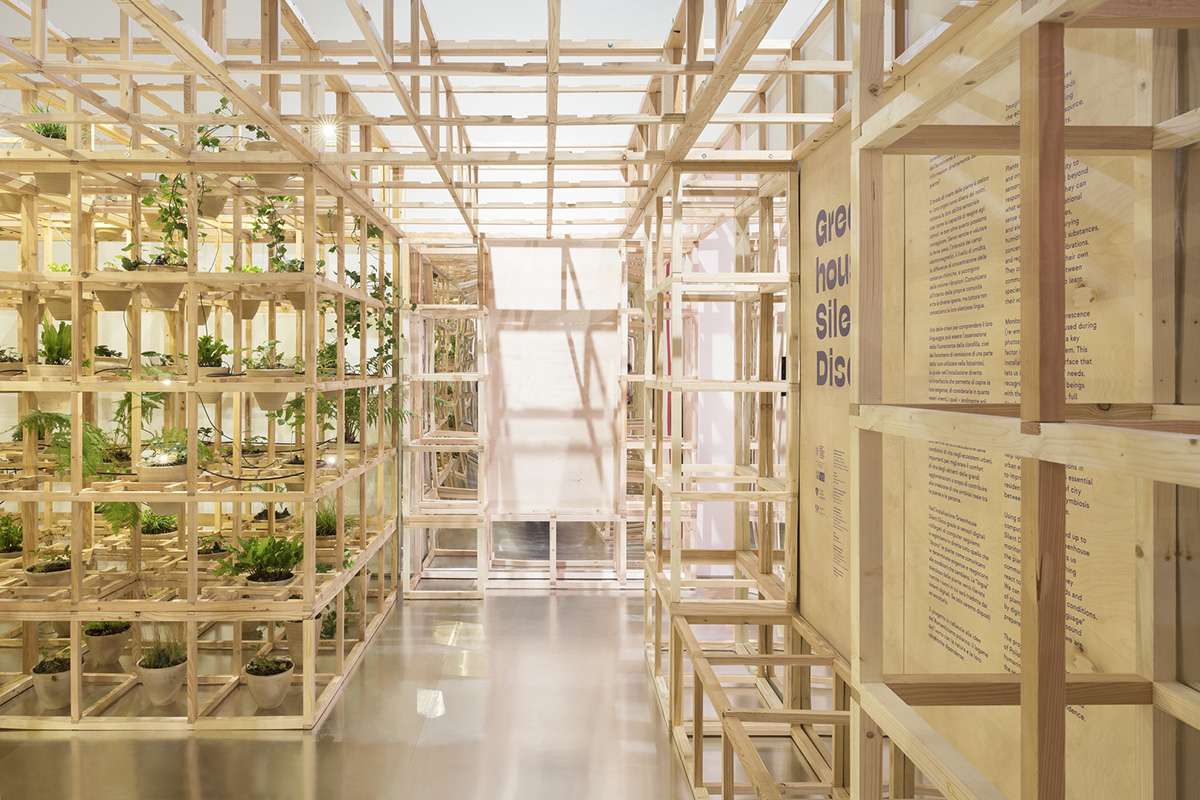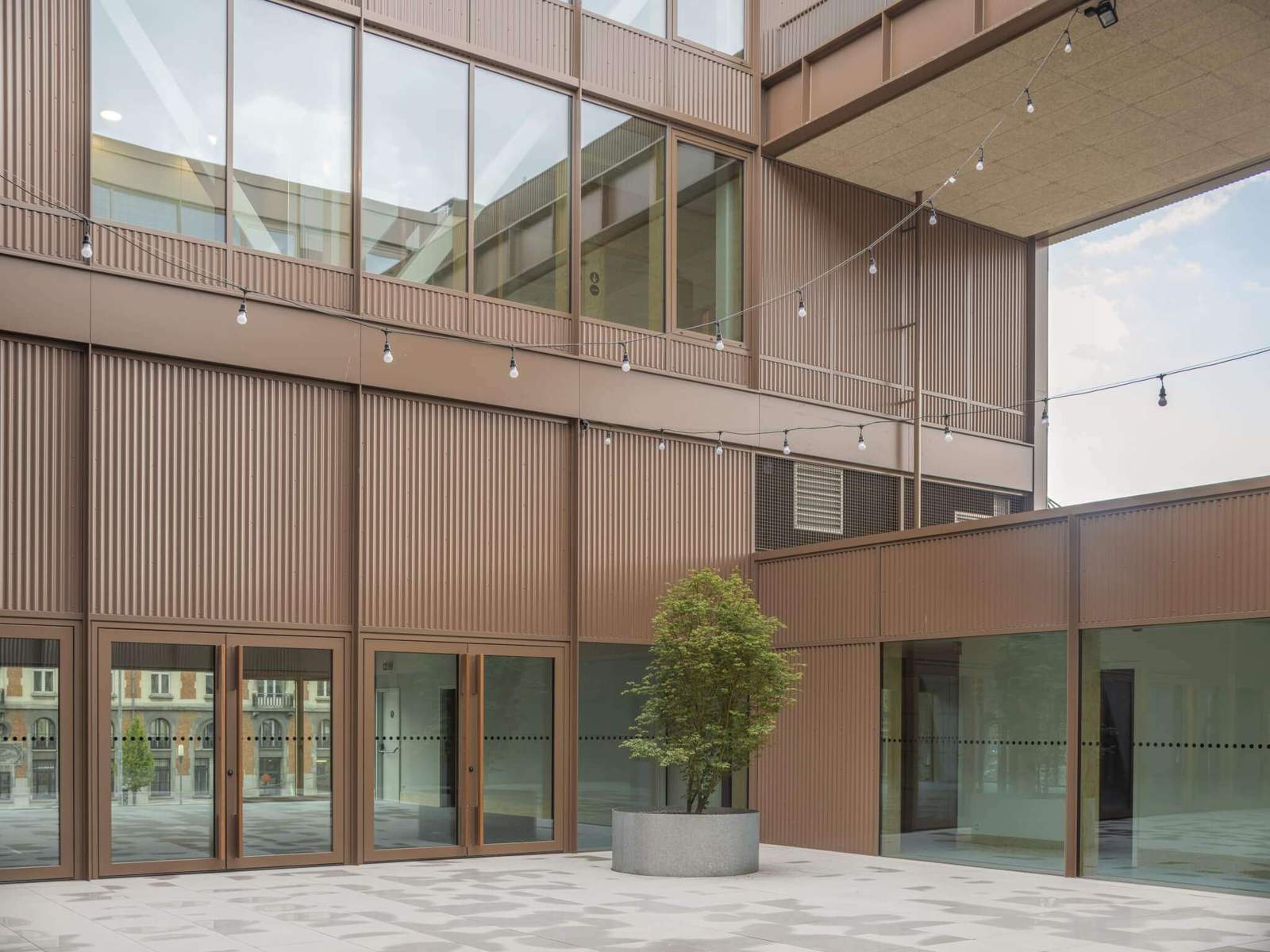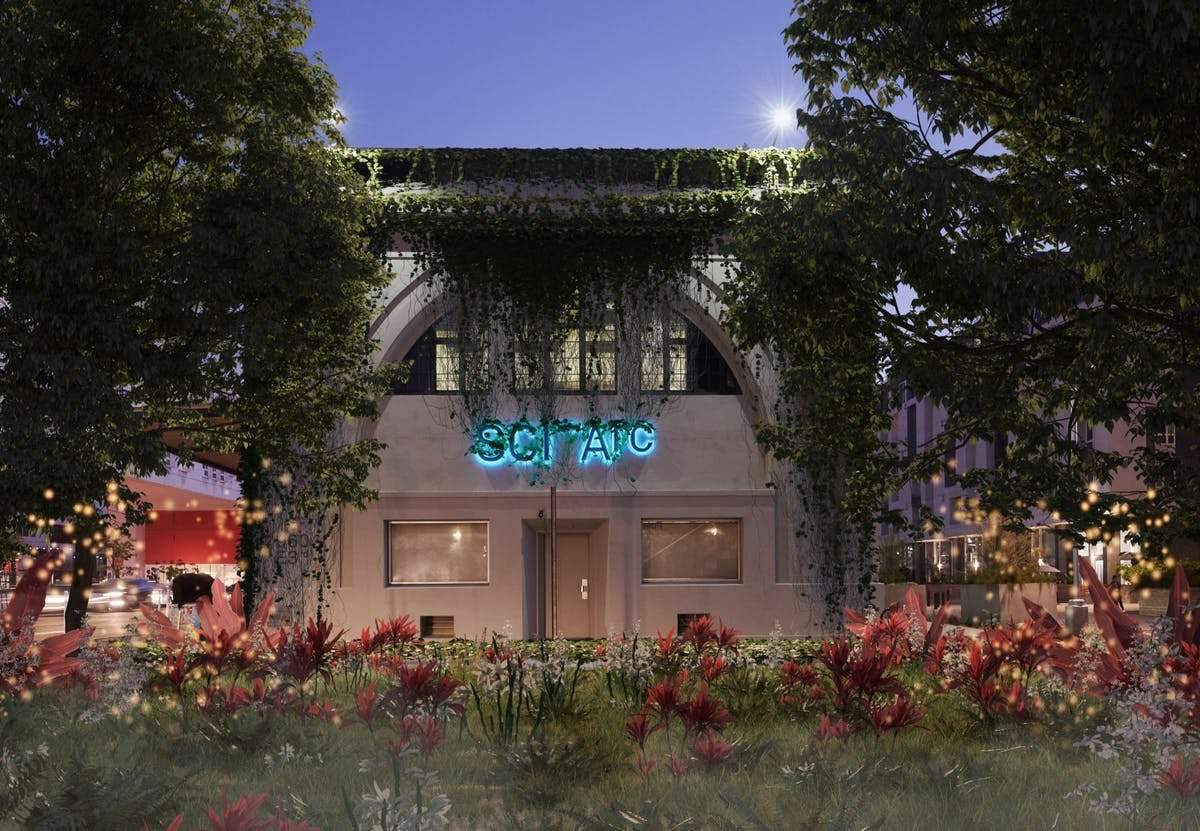The Polish pavilion presented an installation of a wooden matrix at this year’s 23rd Milan International Fair,
deciphering the muted language of plants in a futuristic greenhouse.
Design Features
The installation, called Greenhouse Silent Disco, was shown at Triennale Milano 2022 in Viale Alemagna 6, Milan.
It was designed by Barbara Nawrocka and Dominika Wilczyńska of the architecture firm Miastopracownia.
Organized by the two institutions Adam Mickiewicz Institute in collaboration with the Museum of Architecture in Wroclaw,
the installation explores the intelligence of plants as we move toward environmental well-being.
Representing the relationship between the legacy of romance and the innovations of digital technology in today’s era.
The Polish pavilion was coordinated by Małgorzata Devosges-Cuber and Michał Duda,
creators of numerous exhibitions and publications dedicated to design and architecture.
They blended a sensual, romantic and carnal approach to nature with the possibilities of modern technology.

The 23rd Milan International Fair
The 23rd International Exhibition invites visitors to research the world of things we don’t yet know and explore the unfamiliar
to turn our ideas of the world upside down and open new horizons for sustainability.
In response to the theme, the Polish pavilion joins the campaign by transcending preconceived notions of plants as static and passive beings.
Greenhouse Silent Disco is designed to decipher the silent language of arboreal plants, and make a connection with the parallel intelligence of this complex and mysterious world.
The installation raises some important questions: Have we ever stopped wondering what plants have to tell us?
Or what do they need? What inputs can they give us, to help us rethink the ecosystem in favor of the plant kingdom as well as our kingdom?

The wooden array
Described as a ‘greenhouse of the future’, the wooden array is filled with lush vegetation and equipped with digital sensors that capture the plants’ interactions with various stimuli,
including the presence of humans going through the installation and the changing weather outside.
These reactions are transformed into LED lights and sounds.
At the heart of the project is research by plant physiologist Hazem Kalaji,
professor in the Department of Agriculture and Biology at Warsaw University of Life Sciences, and his iPlant system.
Within the structure, plants communicate with the system through the excess light they receive that they do not use in photosynthesis,
a phenomenon referred to as chlorophyll fluorescence.
The team stated that “this makes it possible to define their needs according to human-centered criteria that we can understand and interpret.”

Graphic design
The graphic design of the installation was done by Warsaw-based new media designer Nikola Chuliwa in collaboration with graphic designer and publisher Magdalena Heliasz.
The wooden structure design is inspired by natural fractals,
plants, preserved in handcrafted clay pots, endlessly reproduced by the reflective glass walls.
An immersive atmosphere where guests find themselves completely surrounded
by the plant life around them, along with their ‘conversation’ in light and sound.
A living and ever-changing installation that refutes any image of nature as perfect and immobile,
and instead reveals its constant flow through the growth of plants and the shifting of seasons between July and December, the period of the 23rd International Exhibition.
An intense and deep relationship develops between visitors and plants in a clear evocation of the romantic, philosophical and literary matrix of the project.
In fact, the installation is presented during the year of Polish Romanticism,
and is filled with events that celebrated the great poet and writer Adam Mickiewicz on the bicentenary of the publication of his Stories and Romances.

The Romantics believed that only in nature could man truly be himself,
so the starting point is to ask whether we can rely on the wisdom of plants to enrich our designs. And the answer is yes.”
The team noted that “the sensory capabilities of plant organisms are far beyond what we can imagine.” Plants have the ability to sense
and assess the force of gravity, sense the intensity of electromagnetic fields and the level of humidity, notice even the slightest vibrations,
and communicate within their community and between different species, it is up to us to choose to listen to them.
For more architectural news
Creating a new gateway to a new Dutch national park in The Hague





